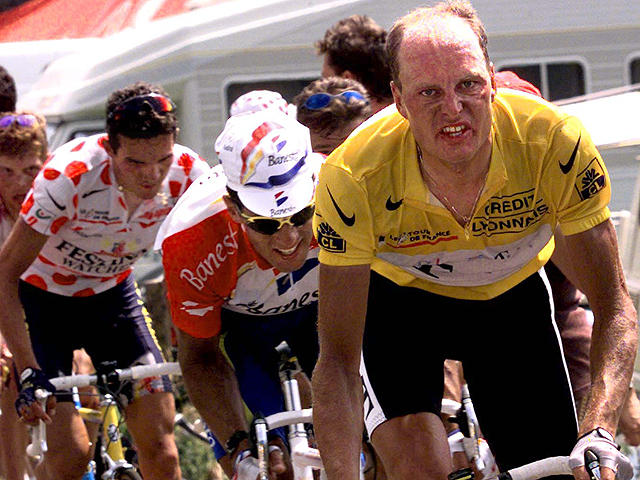The Dig

“Are you havin’ a dig at me?” It’s a good old phrase that one. I hear it occasionally, usually in response to some jest, part of the banter that me and my friends enjoy on a regular basis. It can be used as an off-the-cuff remark, clearly meant in a jocular way, or can carry with it a more sinister edge, a way to make a point that just needs to be made, but wrapped in enough humour to soften that edge but still prick the skin ever-so-slightly and deliver the message. “You sure you’re not havin’ a dig at me?”
The Dig is a beautiful thing when it’s employed in Cycling. Every ride will contain a dig. No matter if you’re out on a supposed cruisy lap, or a long and hard slog, there will always be a dig waiting to be unleashed, or perhaps unfurled. The way it is delivered can be predetermined, even conspired with another, or it can be completely desultory and spontaneous, taking everyone by surprise, even the schlepper making the despatch. It can be timid, or tumultuous. It can be the most subtle of moves, gracefully administered from the saddle with nary a hint of movement or sound to indicate that it is even happening, or it can be more apparent, yet never a violent, aggressive action; that would be an attack.
The Dig is meant to test rather than defeat. It’s a way of saying “there’s more to come, suckers” or to find out what others may have in reserve. Or it’s just a way to niggle, to tease and tempt, to draw a comparison between you and your comrades, who could at any time transform into adversaries, either by your or their doing. It can be one of your most valuable weapons when deployed correctly, or, like holding the grenade and throwing away the pin, a dangerously inept move should you not treat it with care and respect.
All you need to do is pick the right time. Tactics, a trump card for the smartest if not strongest rider, come into their own here; looking for the right opportunity to throw in a Dig is as important a skill as the Dig itself. Most will expect that if the gradient goes up even a small amount, that someone will be willing to Dig. Most though will, all too predictably, want to attack. You can nullify the attack through vocalisation, using the mouth rather than the legs. “We should just take it easy today” is an age-old and proven nullifier. “I’m not getting involved in that” as the first accelerations come. When you’re sure that your comrades have taken the bait, don’t make it blindingly obvious that you are going to up the pace… just a slight increase in tempo will do the trick, and even if only one or two are sent scrabbling for the last wheel, then the Dig has been successful. That small amount of energy used to get back on is a withdrawl from the V-bank, yet leaving just enough to instill a belief that there’s sufficient to cover any more bills that may need to be paid later. It’s a false sense of security that will be the downfall of the economy when further Digs are deployed. And like shareholders in Lehmann Brothers, they won’t see it coming until it’s too late and the coffers are empty.
After a rolling series of Digs, then it’s allowable, and advisable, to pick the last bits of rotting flesh from the carcasses, and hammer the final nail into the collective coffin. If you’ve dug properly, you will have much more Essence of V left than your now tiring and mentally confused adversaries. You can attack. But if you’ve not been absolutely discerning with your digging, then all you will appear to be is an asshole who couldn’t cash the cheques you were so willing to write at will earlier, and you’ll be left desperately scrabbling on the ground for the fives and dimes scattered at your feet.
*One of the best examples of The Dig employed by Bjarne Riis at Hautacam in Le Tour 1996. The way he torments his rivals, goes back to check them out three or four times, then delivers the killer blow is classic Digging.

